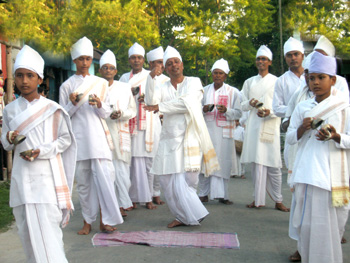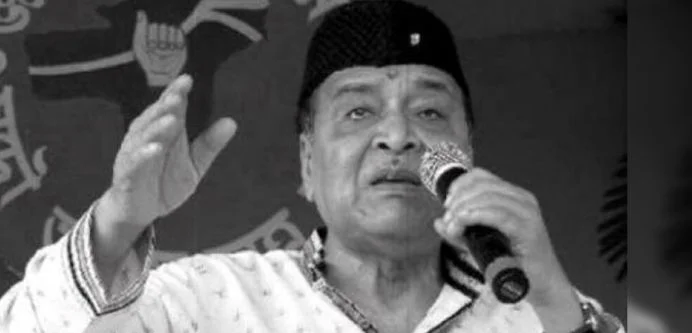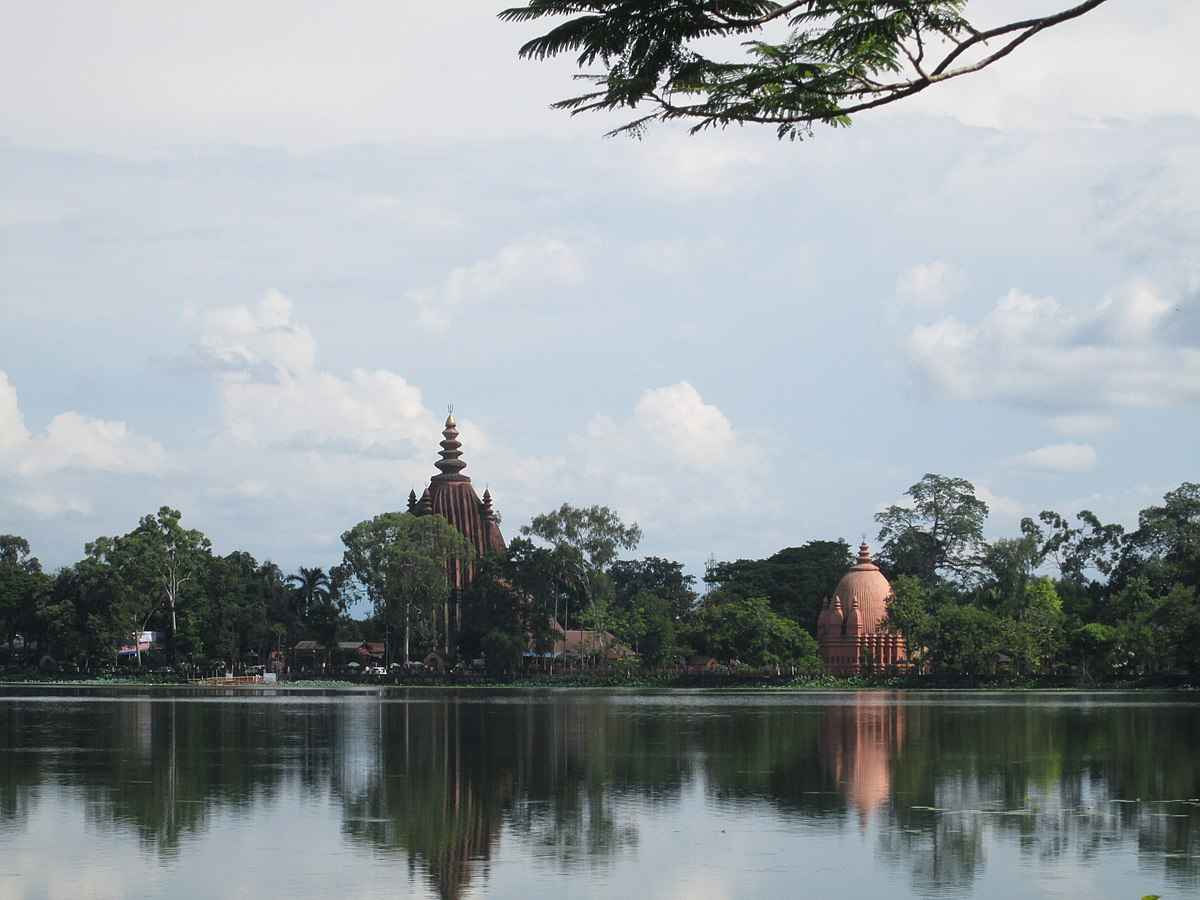OjaPali is a distinctive folk dance from Assam that embodies the rich cultural heritage and traditions of the state. Assam’s culture is a tapestry woven with elements from various ethnic groups, tribes, castes, religions, and languages. Among these diverse traditions, OjaPali stands out as one of the oldest and most revered performing arts.
An OjaPali performance is a unique blend of narrative singing, dancing, dramatic dialogue, and action. The term “OjaPali” refers to two distinct groups within the performance: the “Oja,” who is the leader, and the “Palis,” who serve as the assistants. The Oja is an artist skilled in singing, dancing, recitation, and delivering dialogues, making them the central figure of the performance. Additionally, the Oja is expected to be visually appealing and is regarded as the head artist. Typically, an OjaPali performance includes 3 to 4 Palis, with the “Daina Pali” serving as the principal assistant, literally meaning the “right-hand assistant.”
The themes of OjaPali performances often draw from the epics and Puranas and are closely associated with the worship of the goddess Manasa. The stories are divided into three parts: Deva Khanda, Baniya Khanda, and Bhatiyali Khanda. The dance style of OjaPali incorporates elements of Indian classical dances, such as ‘Hasta,’ ‘Gati,’ ‘Bhramari,’ ‘Utplavana,’ and ‘Asana.’ The songs performed are primarily in Sanskrit and are categorized into two types: “Malaci” or “Malanci Geets” and “Jagar.” Additionally, they perform a type of mixed song called “Patsha Geet,” influenced by Muslim culture. The only musical instrument used in OjaPali is the ‘Khutitaal’ (palm-sized cymbals). The music system of OjaPali reflects a classical orientation and is deeply rooted in the Neo-Vaishnava tradition. The classification of ‘Savaras’ in OjaPali into ‘Ghora,’ ‘Mantra,’ and ‘Tara’ aligns with the Indian classification of ‘Udara,’ ‘Mudra,’ and ‘Tara.’
The OjaPali performers are adorned in traditional attire, with the Oja wearing ‘Ghuri,’ bangles, ‘Unti,’ rings, ‘Nupur,’ and ‘Tangali.’ They are typically dressed in long-sleeved white gowns and silver jewelry, adding to the visual splendor of this ancient art form.
Origins and Evolution
- Kathakata Tradition:
- Ojapali traces its roots back to the ancient Kathakata tradition. This shamanistic dance form emerged as a collective expression, performed by a group of skilled artists.
- The Kathakata tradition provided the foundation for Ojapali’s unique blend of song, dance, and storytelling.
- Group Performance:
- Ojapali is inherently communal. It thrives on collective energy and synergy.
- A chorus of singers and dancers come together during Ojapali performances, creating a captivating spectacle that transcends individual boundaries.
- Patronage and Influence:
- Originally flourishing in the Kamata state, Ojapali found its home in the western and northern regions along the Brahmaputra River.
- The Darrangi King Dharmanarayana played a pivotal role in preserving and promoting Ojapali, ensuring its continuity through generations.
In summary, Ojapali’s evolution from the Kathakata tradition, its emphasis on group performance, and the patronage it received have collectively shaped this timeless dance form.
Performance Elements
- The Oja:
- The Oja is the central figure in Ojapali performances. They lead the entire show, guiding the other artists.
- The Oja’s multifaceted role includes singing, delivering dialogues, expressive gestures, and improvisational acting.
- Their presence sets the tone for the entire performance.
- The Palies:
- Supporting the Oja are four or five Palies (assistants). Among them, the Daina Pali plays a crucial role.
- The Daina Pali stands on the right-hand side of the Oja, actively participating in the dance.
- Together, the Palies weave the narrative through song and dance, enhancing the overall experience.
- Cymbal Music:
- Throughout the performance, the Palies continuously play cymbals.
- The rhythmic sound of the cymbals adds depth and energy to the Ojapali, creating an immersive atmosphere.
Themes and Lyrics
- Shakti Puja:
- Ojapali is intricately linked to Shakti worship. The lyrics sung during performances often honor powerful goddesses.
- Goddesses like Manasa, Kali, Durga, Kesikhaiti, and Kakogoshani take center stage in Ojapali narratives.
- Through their stories, Ojapali celebrates feminine energy, protection, and divine grace.
- Padma Purana Inspiration:
- The Padma Purana, an ancient Hindu scripture, serves as a wellspring of inspiration for Ojapali.
- Within its verses lies the tale of the serpent goddess Maroi (also known as Manasa Devi).
- Ojapali artists draw from this rich mythological source, weaving Maroi’s story into their performances.
Forms of Ojapali
- Byah or Bigoya Ojapali:
- Occasion: Byah Ojapali is performed during weddings and other joyous celebrations.
- Purpose: It celebrates union, love, and the festive spirit.
- Vibrant Energy: Dancers and singers come together to create an atmosphere of joy and togetherness.
- Sukananni Ojapali or Maroi Goa Ojapali:
- Association: Sukananni Ojapali is closely linked to the serpent goddess Maroi (also known as Manasa Devi).
- Mystical Undertones: This form carries mystical and spiritual themes.
- Narratives: Artists weave Maroi’s story into their performance, invoking her divine presence.
- Ramayana Ojapali:
- Inspiration: Inspired by the epic Ramayana, this rendition brings mythological tales to life.
- Storytelling Through Dance: Dancers enact episodes from the Ramayana, captivating audiences with their expressive movements.
- Devotion and Artistry: Ramayani Ojapali combines devotion, art, and cultural heritage.
In summary, Ojapali’s diverse forms cater to different occasions, emotions, and inspirations, making it a dynamic and cherished part of Assam’s cultural tapestry.
Legacy and Revival
- Legacy:
- Origin: Evolved from the Kathakata tradition, Ojapali emerged in the Kamata state (western and northern part of the Brahmaputra River). It was later limited to the Darrang area under the patronage of Darrangi King Dharmanarayana.
- Performance Elements: Ojapali includes songs, dialogues, gestures, improvised acting, and dramatization.
- Group Composition: An Oja (chief singer) leads the performance, accompanied by four or five palies (performers) who continuously play cymbals.
- Influence on Shankardev: Some believe that the great Assamese saint and cultural icon Shankardev drew inspiration from Ojapali while creating his Ankiya Bhaona. He also developed his own Sattriya Ojapali.
- Associated Deities: Ojapali is linked to Shakti Puja, including deities like Manasa, Kali, Durga, Kesikhaiti, and Kakogoshani.
- Revival Efforts:
- Sangeet Natak Akademi Awardees: Lalit Chandra Nath and Kinaram Nath received recognition for their contributions to Ojapali.
- Contemporary Development: Lalit Chandra Nath Oja’s family actively works toward Ojapali’s development in Sipajhar.
Conclusion
In conclusion, the OjaPali dance is a vibrant and enduring representation of Assam’s rich cultural heritage. As one of the oldest performing arts in the region, it has preserved and conveyed stories from epics and religious texts, maintaining a deep connection with the spiritual traditions of the Assamese people. The intricate blend of narrative, music, dance, and dramatic performance in OjaPali showcases the artistic prowess and cultural depth of the region. The dance form not only entertains but also serves as a vehicle for cultural education, passing down historical and religious narratives through generations. With its classical influences, unique musical structure, and traditional attire, OjaPali remains a cherished and integral part of Assam’s cultural identity, reflecting the diversity and richness of its people.
FAQ’s
Q. What is OjaPali dance?
A: OjaPali is a traditional folk dance from Assam, India, that combines narrative singing, dancing, dramatic dialogues, and action. It is one of the oldest performing arts in the region and plays a significant role in preserving Assam’s cultural heritage.
Q. What are the main components of an OjaPali performance?
A: An OjaPali performance includes narrative singing, dancing, and dramatized dialogues. The performance is led by an “Oja,” who is the main artist, supported by a group of assistants called “Palis.”
Q. What musical elements are used in OjaPali?
A: The music of OjaPali is primarily based on Sanskrit songs and features two types of songs: “Malaci” or “Malanci Geets” and “Jagar.” The only musical instrument used is the ‘Khutitaal,’ a palm-sized cymbal.












